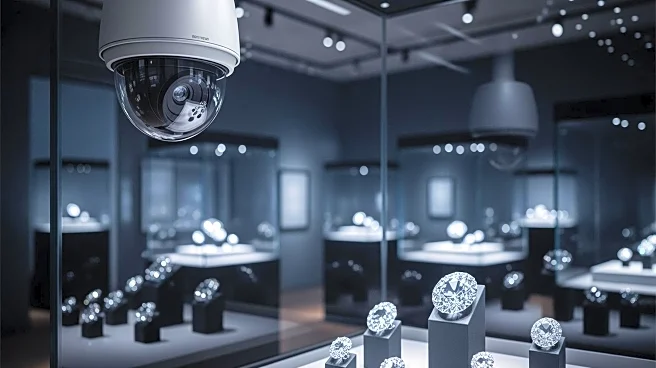What's Happening?
The Louvre Museum in Paris experienced a significant security breach when thieves stole historic jewels valued at over $100 million. The museum's director, Laurence des Cars, informed a French Senate committee that the balcony used by the thieves was
not covered by the museum's outdated camera system. The heist occurred during opening hours, with robbers using a truck-mounted ladder to access the building. Despite alarms being triggered, the thieves managed to escape on scooters. The museum's security infrastructure has been criticized for being obsolete, with des Cars highlighting chronic underinvestment in equipment and infrastructure. The jewels, dating back to the Napoleonic era, are feared to be dismantled for their raw materials.
Why It's Important?
This incident raises serious concerns about the security of national treasures housed in museums. The ease with which the thieves accessed the Louvre highlights vulnerabilities in protecting valuable artifacts. The theft not only represents a significant financial loss but also a cultural one, as the stolen jewels are irreplaceable historical artifacts. The event has shocked the nation and prompted discussions on the need for modernizing security systems in museums. The potential dismantling of the jewels for raw materials underscores the urgency in recovering them before they are lost forever.
What's Next?
In response to the heist, the Louvre Museum is considering several security enhancements. These include fortifying the museum's perimeter and possibly installing a police station within the premises. The director has suggested prohibiting parking near the museum to prevent similar incidents. Investigators are actively searching for suspects and have retrieved one of the scooters used in the escape. The museum's leadership is under pressure to address these security lapses and prevent future occurrences.
Beyond the Headlines
The theft at the Louvre may prompt broader discussions on the security of cultural institutions worldwide. As museums house invaluable artifacts, the need for robust security measures becomes increasingly critical. This incident could lead to a reevaluation of security protocols and investment in modern technology to safeguard cultural heritage. The ethical implications of dismantling historical artifacts for profit highlight the challenges in preserving history in the face of criminal activities.















